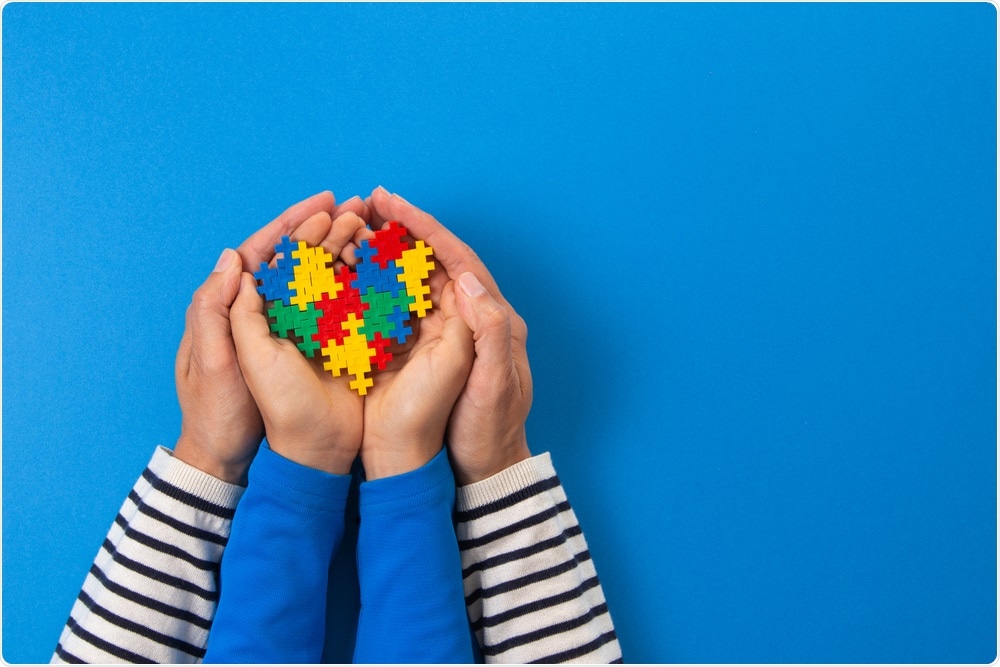.jpg) Thought LeadersDr. Steven StaggSenior LecturerAnglia Ruskin University
Thought LeadersDr. Steven StaggSenior LecturerAnglia Ruskin UniversityIn this interview, News-Medical speaks to Dr. Steven Stagg about his latest research into autism and how autistic children struggle to read hidden emotions.
Please could you introduce yourself, tell us about your background in autism, and what inspired your latest research?
My name is Dr. Steven Stagg. For the past 10 years, I have been researching different aspects of autism spectrum disorder. My previous work has investigated social processing in autism, being diagnosed later in life, and autistic traits in transgender and non-binary individuals.
I am currently examining stress and resilience in British Indian parents with an autistic child and adults experiences of meltdowns. The idea for my research on emotion came about while I watched a TV program in which a happy father cried at his daughter's wedding. This started me thinking of how we process emotions in terms of context. For example, how did I know the father was overjoyed and not upset?
The World Health Organization estimates that worldwide, roughly 1 in 160 children have autism but there is no one cause for autism. Why is this?
If you are asking why the number of children with autism seems to be increasing, then this is probably because we are getting better at recognizing autism in children. Historically women and ethnic minorities have often had their autism overlooked or misdiagnosed. As knowledge about autism becomes more prominent, parents become better at recognizing the signs of autism in their children, leading to more diagnoses.
Autism is a genetic disorder but is likely to result from a combination of genetic factors rather than a single gene, which makes explaining the causes of autism tricky.

Image Credit: Veja/Shutterstock.com
What is meant by a ‘hidden emotion’ and how do these differ from ‘regular’ emotions?
I think it is helpful to think about actors to explain this. The job of an actor is to convey emotion and inner feelings to the audience. However, in real life, we often need to mask our feelings and cover our emotions.
For example, if a work colleague is turned down for a promotion and smiles weakly and says, 'it's okay, I didn't really think I would get the position anyway', we know they are feeling sad and not happy. In this case, we might say that they are hiding their true feelings.
Human emotions have been shown to be extremely difficult to understand. Why is this and why would this make it even more difficult for people with autism?
This is a difficult question to answer. I am not an expert on emotion. I would say that emotions are embedded within social contexts. They serve social purposes, which makes it tricky to read someone’s emotions. When emotions are stock and obvious, they are not difficult to recognize, and autistic individuals seem to have little problem in these instances.
However, when they are embedded in a real-world scenario, they are less obvious. Interpretation of the scenario and, a lot of times, knowledge of the person displaying the emotion is necessary to work out how someone really feels.
Why is being able to detect the differences between emotional expressions and emotional feelings essential in managing social conservations?
Because this allows us to respond appropriately to individuals and thus foster bonds. In the scenario mentioned above, where the work colleague fails their promotion, we could respond by saying, 'not to worry, let's have a coffee and talk about it.'
Alternatively, we might respond by saying, 'well, you didn't think you would get the job anyway'; the second response is unlikely to foster a bond.

Image Credit: Photographee.eu/Shutterstock.com
Can you describe how you carried out your latest research into autistic children and hidden emotions?
We first showed the adolescents pictures of emotions. We established that they were as good as their neurotypical peers at identifying the emotions. We then showed them short videos where an actor displays their emotion (fear at seeing a spider). Then he feigns a smile to cover up his fear (e.g. the actor's girlfriend enters the scene, and he does not want her to think he's afraid). The final frame of the video freezes on the actor, feigning a smile.
Here, the adolescents were asked to name the actor's emotion and the emotion the actor was feeling. The neurotypical group identified the displayed emotion as nearer to happy and the felt emotion as nearer to fear. The autism group did not distinguish between the displayed emotion and the felt emotion. Instead, they identified both as being nearer to happy.
What did you discover?
That adolescents with ASD were as good as their neurotypical peers at recognizing emotion from a photograph. Still, they had difficulty taking context into account when deciding how someone was feeling. As a result, their decision was based on how someone looks rather than what the context informs them
Were there any limitations to your research? If so, what were they?
Our sample size was relatively small, but this is relatively common in autism research.
Do you believe that with continued research into the way autistic children process emotions, we can help these children understand emotions easier?
I think we need more research into this area. For example, we might question why autistic individuals need to be trained to recognize emotion and whether they can do this effectively.
On the other hand, suppose people understand that emotion recognition is a difficulty and accommodate that difficulty. In that case, it will make life easier for individuals with autism.
What are the next steps for you and your research into autism?
In terms of emotion and context, we need to explore how neurotypical children develop the ability to inform their judgments about others’ emotions based on context. It would also be interesting to see when this appears in development and what factors enhance this ability.
About Dr. Steven Stagg
I am currently a senior lecturer at Anglia Ruskin Univerity. I have also worked with the Westminster Parliamentary Committee on autism..jpg)
In addition, I have been awarded grants to study adults who have received a diagnosis after the age of 50 and grants to research autism-related issues in minority ethnic groups in the U.K.
Posted in: Child Health News | Thought Leaders | Healthcare News
Tags: Adolescents, Autism, Children, Coffee, Gene, Genetic, Genetic Disorder, Research, Stress
.png)
Written by
Emily Henderson
During her time at AZoNetwork, Emily has interviewed over 150 leading experts in all areas of science and healthcare including the World Health Organization and the United Nations. She loves being at the forefront of exciting new research and sharing science stories with thought leaders all over the world.
Source: Read Full Article
